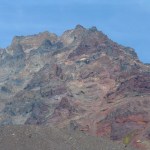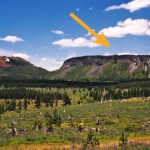Oregon
As a PhD student, Laura Syron was helping her advisor with workplace safety research focused on the Pacific Northwest commercial fishing industry. The project got her thinking about worker safety throughout the seafood supply chain, from the boat to the processing plant. So she decided to do a study of her own.
The result is likely the first to examine occupational health and safety inside Oregon’s seafood processing industry. Along with her co-authors, Syron, a doctoral student at Oregon State University College of Public Health and Human Sciences, examined data from workers’…
Last week, Oregon's Senate and House passed a bill that requires businesses with 10 or more employees to let them earn up to 40 hours of paid sick time each year. Governor Kate Brown is expected to sign the bill, which would make her state the fourth in the nation mandating paid sick days. Connecticut was the first state to pass a paid-sick-days law, in 2011, and California's legislature followed in 2014. In Massachusetts, advocates introduced a ballot proposal on earned sick time, and the state's voters approved it in the 2014 election.
The original version of Oregon's bill would have…
How quickly things change.
If there's one thing I always feel obligated to warn my fellow pro-science advocates about vaccines and the antivaccine movement, it's that we can never rest on our laurels or assume that the tide is turning in our direction. The reason is simple: Antivaccinationism is a powerful belief system, every bit as powerful as religion and political ideology. It's powerful not just among antivaccinationists, but also because it taps into belief systems that are very much part and parcel of being an American. In fact, depressingly, yesterday I learned of a perfect example of…
Poor Andy Wakefield.
Beginning in the late 1990s until around six years ago, Andy was the premiere "vaccine skeptic" in the world. His 1998 case series published in The Lancet linking bowel problems in autistic children to the measles vaccine, the one where in the paper itself he was careful not to blame the MMR vaccine for autism but elsewhere was not so shy, launched a campaign of fear and loathing for the MMR vaccine that continues to this day. In his heyday, Wakefield was quite the figure, showing up on the media everywhere, treated with undeserved respect by much of the tabloid press and…
With the Disneyland measles outbreak still going strong and striking far more unvaccinated than vaccinated, it's not surprising that a discussion has begun in some states about lax policies that permit religious and/or philosophical exemptions. In Oregon, for example, the legislature is considering SB442, a bill apparently originally intended to provide a technical fix to the process for obtaining philosophical exemptions to vaccine mandates by giving parents deadlines to submit the required documentation for non-medical exemptions, but the antivaccine troops became totally riled up when the…
While we take a breather during this holiday season, we’re re-posting content from earlier in the year. This post was originally published on January 6, 2014.
by Liz Borkowski, MPH
Now that it’s 2014, millions more people in the US have health insurance coverage (either Medicaid or private insurance), thanks to the Affordable Care Act. In the weeks ahead, many of the newly insured will be visiting healthcare providers to address ongoing health concerns. The Washington Post’s Sandhya Somashekhar and Karen Tumulty highlighted one person with a pent-up demand for healthcare, Sharon Kelly of…
Now that it’s 2014, millions more people in the US have health insurance coverage (either Medicaid or private insurance), thanks to the Affordable Care Act. In the weeks ahead, many of the newly insured will be visiting healthcare providers to address ongoing health concerns. The Washington Post’s Sandhya Somashekhar and Karen Tumulty highlighted one person with a pent-up demand for healthcare, Sharon Kelly of Louisville, Kentucky:
Kelly said that having Medicaid coverage on Jan. 1 “is a huge relief,” adding, “I’m a redhead and I used to live in California. I have things on my skin that are…
"I never considered a difference of opinion in politics, in religion, in philosophy, as cause for withdrawing from a friend." -Thomas Jefferson
We all have our own unique story in this world, of where we came from, who we are now, and how we've grown to become the person we are. We've all had some help along the journey -- from friends, family, teachers/mentors or even from strangers -- and yet we can all conceive of ways we'd like to see the world improved. This weekend, let Brother Ali (featured once before here) remind you of this as he sings about his son,
Faheem.
Well, I'm about to…
"If the stars should appear one night in a thousand years, how would men believe and adore, and preserve for many generations the remembrance of the city of God which had been shown!" -Ralph Waldo Emerson
If you're a regular here, you're no doubt more connected and interested in what lies beyond this world than most. But how often do you truly get to experience the wonder of a dark night sky for yourself? Like a great many of you, I live in the city, and in a particularly cloudy, overcast part of the world. During much of the year, it's far too cold to be out stargazing, and for perhaps the…
At the Washington Post's Wonkblog, Ezra Klein has put up two posts about healthcare costs that are well worth reading. The first is about Oregon's Medicaid program, which has been the basis for some exciting recent research on how Medicaid coverage affects recipients' lives and is now trying to reduce the growth in healthcare costs by improving community health. The second is an interview with Bill Gates, whose Gates Foundation is trying to reduce global deaths of children under age five. Both pieces address one of today's key healthcare questions: How can we best use finite resources to…
by Elizabeth Grossman
Two industrial accidents - one fatal - that occurred on May 11 within 40 miles of each other are a reminder what a fine line there can be between workplace safety and acute danger.
One incident occurred at the Stimson sawmill and hardwood facility in Gaston, Oregon, (about 35 miles west of Portland) where workers were removing the cap from a hydraulic accumulator - a routine operation on a piece of equipment used to power mill machinery - in preparation for moving it from one location to another. Described as a metal cylinder about 5 feet long and 10 inches in diameter…
Mt. Hood in Oregon, taken August 2008. Image by Erik Klemetti. Click on the image to see a larger version.
Quick news!
I'm not going to go into too much depth right now about the recent study published in Nature Geoscience on Mt. Hood in Oregon - I plan to talk about it more in a few weeks. Why is that? Well, the lead investigator on the study, Dr. Adam Kent of Oregon State University, is a friend of mine (and occasional Eruptions commenter) so I plan to get the details from him before posting. I was also peripherally associated with some of this work - mostly in the field acting as a pack…
The northern Chilean and southern Peruvian Andes are full of volcanoes that look stunning - I mean, jaw-dropping details of volcanism litter the landscape. The reason for this is two fold: (1) there is an awful lot of volcanism in the northern Chilean/southern Peruvian Andes (as known as the Central Volcanic Zone) - and has been that way for over 10 million years and (2) it has also been very, very dry in the area (most of which is known as the Altiplano-Puna Plateau) for at least a few millions years as well - it is the home of the Atacama Desert! So, this means you get lots of volcanic…
The latest Eruptions Word of the Day is "Tuya".
So, what is a tuya?
This is a tuya:
A tuya! Click on the image to see a larger version. Image by Erik Klemetti.
Alright, well, that doesn't entirely help, does it?
Lets look at the feature the arrow indicates. Some observations:
(1) It is low and broad.
(2) It has a relatively flat top.
(3) It is steep-sided.
(4) If you look real close, you can see crudely columnar jointing in the some of the outcrops near the top.
(5) If you had a piece of it in your hand, you'd know it was a volcano rock (andesite, very rarely you can find bits that are quite…
Some news for a sleepy Monday:
Mt. Hood in Oregon.
The ash from Eyjafjallajökull is, once again, causing significant airspace closure over northern Europe - close of 1,000 flights today. However, much of the closures are fairly short-lived, but that isn't keeping people happy. The eruption hasn't actually changed much, just that the winds are bringing ash towards Europe. The ash for the next few days will likely effect the England, Scotland, Ireland, Netherlands, France and possibly other parts of northern Europe (along with airspace over Greenland and the north Atlantic). The ash plume is…
I finally remembered to bring my GSA notes with me to the office, so I can finally post a wrap up of what I saw/heard at the big 2009 meeting in Portland. I'll have a specific post on Kasatochi - too much to say here. However, a great time was had by all!
The crater of Collier Cone in Oregon. The scoria cone likely experienced years of explosive strombolian eruptions when it formed.
Some interesting volcano-related notes:
Clive Oppenheimer pointed out that the Toba eruption 74,000 years ago covered >1% of the Earth's surface with >10 cm (~4 in) ash. To put that in perspective, the…
tags: researchblogging.org, climate change, global warming, oceanic dead zones, west coast, North America, Oregon state, Washington state
Millions of dead crabs are washing up onto Oregon and Washington state beaches from the offshore "dead zone".
Ever since it was first noticed by crab fishermen who hauled up hundreds of dead and dying crabs in 2002, the "dead zone" that popped up in the waters along the northwestern coastal shelf just off the coast of Oregon has claimed unknown millions of lives. This oxygen-depleted region has transformed formerly rich seafloor communities teeming with…




